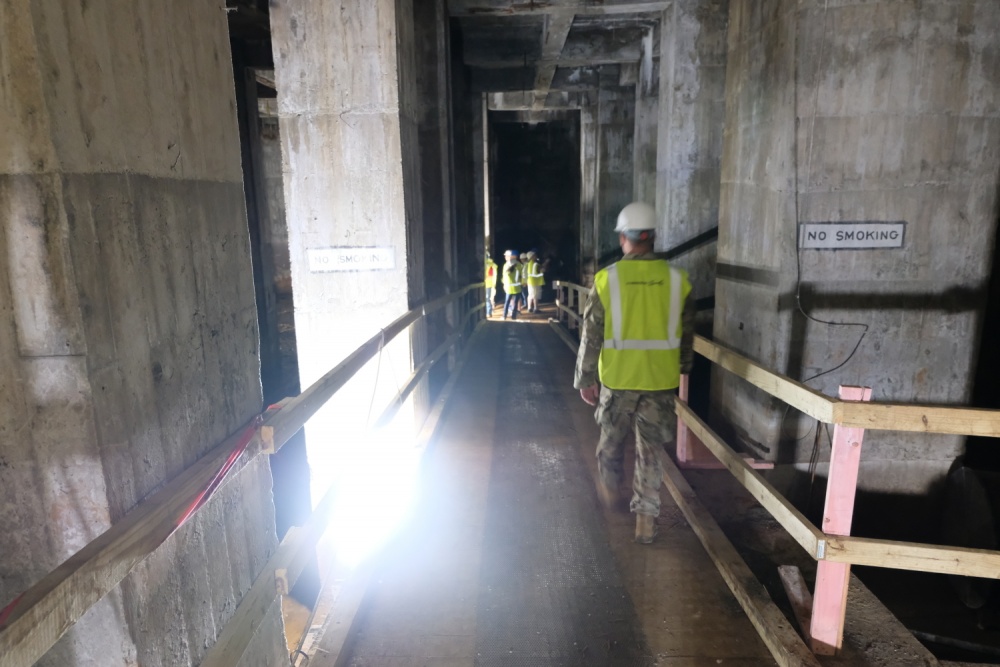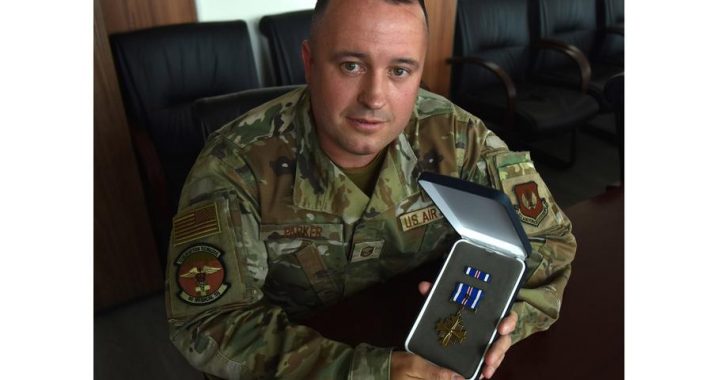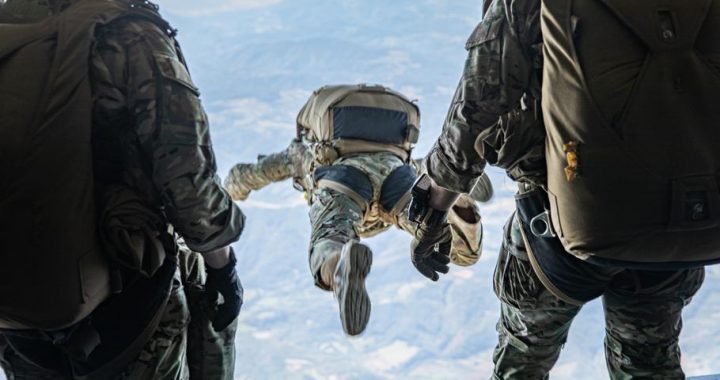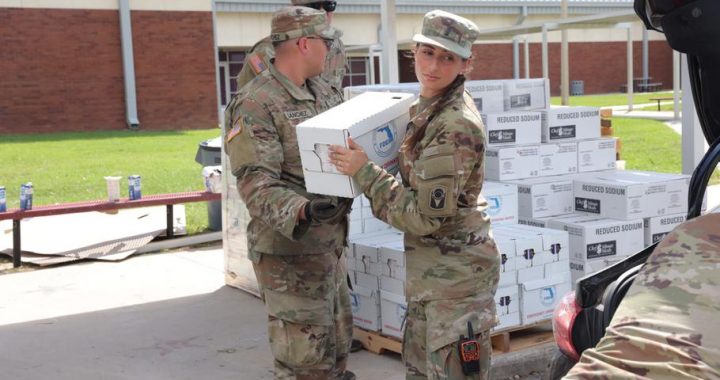From Motown to Megacities: Deterring and Preparing for America’s Worst Day
6 min read
LANSING, MI, UNITED STATES
Story by Spc. Samantha Hall
Michigan National Guard
A gap in doctrine exists concerning operations in dense urban terrain. The 46th Military Police Command (46MPC) of the Michigan National Guard looked to fill this gap through the unifying power of a simulated 5 kiloton nuclear detonation August 13-15, 2019 on the Ambassador Bridge spanning between Detroit, Michigan, and Windsor, Canada.
The 46MPC, one of only two military police command units in the entire country, provides command and control for CBRN Response Element – B (C2CRE-B) as Task Force 46. When directed by the POTUS or Secretary of Defense, Task Force 46 (TF 46) coordinates life-saving response and resources in support of civilian authorities during a designated DSCA or a Chemical Biological Radiological or Nuclear (CBRN) type attack on U.S. soil.
Preparing for such an attack, a catastrophic event that the Soldiers of TF 46 hope will never come, is done through rigorous training exercises in the most complex situations imaginable, and the most dangerous terrain possible: major metropolitan areas/large cities.
Where: The Rise of Megacities
According to the 2014 Chief of Staff of the Army’s Strategic Studies Group report, over half of all people currently live in cities. Each day, an estimated 180,000 people across the globe migrate to cities, and that rate is increasing.
Emerging from this trend are cities of 10 million or more occupants dubbed “megacities”. In his 2013 book “Out of the Mountains: The Coming Age of the Urban Guerrilla,” counterinsurgency expert David Kilcullen states that global mega-trends such as population growth, urbanization, littoralization and increased economic globalization will be forces to contend with in the coming years.
“In the next century, the urban environment will be the locus where drivers of instability will converge,” Kilcullen said.
Despite this rapid urbanization, current Army doctrine doesn’t account for large urban centers. “We as an Army, as a joint force, do not really get practical training opportunities to execute operations in these dense urban operations,” said Col. Chris A. McKinney, the TF 46 (C2CRE-B) Director for CBRN response planning. “Historically, everything the Joint Force has done has largely been rural.”
According to the Strategic Studies Group report, the scale and complexity of emerging megacities defies historical methods of operation which rely on isolating and shaping an operational area to meet operational needs. Physically or virtually controlling these emerging complex landscapes is virtually impossible, and the training facilities needed to accurately evaluate these scenarios don’t exist. Muscatatuck Urban Training Center in Indiana, the DoD’s largest urban training facility, has 68 buildings and covers 1.5 square miles. By comparison, a 6 square mile area of Manhattan has approximately 27 square miles of ground space when the interiors of buildings are taken into account.
“About every city that would be the target for a Weapon of Mass Destruction or CBRN response where TF 46 will be directed to execute a response that we would be required to do, under our mission, is going to be in a major metropolitan area,” McKinney said. “If we’re really going to train to do this, we need to replicate that aspect of it and any environment that we can.”
What: The Explosion
The Ambassador Bridge spanning between Detroit, Michigan, and Windsor, Canada, serves as the proving grounds to a Dense Urban Terrain (DUT) exercise August 13-15, 2019, when a simulated 5 kiloton nuclear weapon “detonates” in the middle of the bridge. The exercise is headed by Task Force 46, in support of its training needs for the USNORTHCOM C2CRE-B mission.
The simulated detonation is instigated by a fictitious domestic terror group called the Universal Opposition Collective, headed by a disgruntled and equally fictitious Dr. Samuel Artemis Johnson. The terror group obtained a nuclear missile out-of-country and detonated it in a final attempt to cause destabilization throughout the nation. The blast destroyed the Ambassador Bridge and was powerful enough to knock over nearby buildings. The blast also created an extreme flash of heat, widespread radiation and a pulse of electromagnetic energy that would destroy surrounding electronics. Following the event, several fires raged across the blast radius, including a flaming oil spill from a freighter and a fuel terminal. A plume of radioactive debris also travelled along the river for several miles.
Why: The Response
Following the simulated disaster, units coordinated by Task Force 46 notionally provide support, including chemical decontamination, firefighting, communication, logistics and medical assistance through coordination within a unified incident command system. Response activities include establishing communications, transportation, food, water, medical care, hazardous material clean-up, chemical decontamination, route clearance, mass care, evacuation, recovery of remains and coping with civil disorder.
“You take the easy button out of it when you do this. It really puts the realism back into the training,” McKinney said.
A situation of this severity and complexity demands collaboration. Task Force 46 has spent the past two years building relationships with over 50 organizations, including representatives from international, federal, state and local entities. These relationships are critical: in the event of a catastrophe like this one, Task Force 46 would support these civilian agencies and fill their capability gaps wherever they appear as rapidly as possible.
“We’re working with our state and local partners to understand their job, their role in the event if an emergency does occur,” said LTC Thomas Rossiter, Deputy G1, 46MPC and exercise lead planner. “Our exercise is an attempt to improve our understanding of what our partners are doing so that when we come in we can integrate more readily into their response effort.”
“This gives us a venue to learn from the people who actually operate in that environment on a daily basis,” said McKinney.
According to Kilcullen, the complicating factors of dense urban terrain are the presence of a complex vertical axis that involve both high-rise and subterranean environments, limited maneuverability around immoveable structures like buildings and streets, and the inability of modern weapons and communications systems to compensate for the complex environments these aspects create. A training center, McKinney argues, could never account for the complexities that Detroit or other major metropolitan areas have to offer.
“It has at least the beginnings of dense urban operational environment, though it doesn’t classify as a megacity just yet,” Rossiter said.
Detroit is able to provide real-world examples of these complicating features, including an irregular street pattern and limited aerial maneuverability, complicating navigation. Despite the absence of a subway system, Detroit has a variety of subterranean environments, including sewer systems, steam tunnels, salt mines, parking garages, train platforms/tunnels, prohibition-era smuggling tunnels and more.
Local partners have practical knowledge of safety equipment, the terrain, and communication difficulties associated with the unique high-rise and underground environments of a city because they operate in an incident command situations every day.
“Subterranean environments: we don’t do that much. Your normal line-of-sight, military-type systems don’t function well down there,” said McKinney. “The police and fire department have perfected some of those communication challenges.”
“The Fire department lives by the incident command system; we all make decisions together within the unified command,” said Eugene V. Biondo, Deputy Chief of Fire Operations, Detroit Fire Department. “It doesn’t matter if it’s a small fire or a nuclear weapon; the concept is the same. You just keep elevating the level of your response.”
Windsor was also in the blast zone, creating similar difficulties for them to resolve with their U.S. partners.
“We’re affected by the same scenario, so we should be working together to resolve it,” said Canadian Armed Forces Capt. Nicolas Coutu, decontamination unit commander of the 2nd Service Battalion. “Just looking at the way U.S. agencies work together gives us ideas on how ours work together.”
Task Force 46 will join their Canadian partners once again in another collaborative response to a simulated disaster. This exercise was part of a cumulative effort to train in DUT environments that is scheduled to reach New York City next year.
With a population of 8.6 million people in 2017 according to the U.S. Census Bureau, it is projected to join the rise of mega-cities across the globe. When it does, training such as this will ensure the U.S. Army is ready for the challenges to come.








